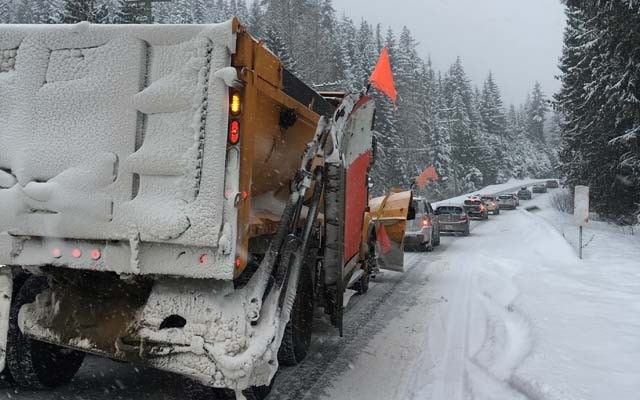The amazing snow last week made it feel like the good ol' days.
But it also brought into focus some serious issues with traffic management in and around the village, and heading into and out of Whistler.
Traffic was gridlocked for most of the day Sunday, Dec. 11. For many, the trip home to the Lower Mainland took up to four hours. And it started after lunch — not after the lifts had closed on the mountains.
One can't help but conclude that the stories of our traffic woes are spreading and skiers would rather miss an afternoon of epic skiing in the hopes of missing trafficmageddon.
No such luck last weekend.
And what about anyone who wanted to pop to Function and shop there? Pretty sure not a single local was willing to brave the bumper-to-bumper traffic unless it was an emergency.
Obviously, the snowfall and icy roads did not help with traffic woes — but we are a ski resort, and so it's logical to assume that: a) snow will fall and b) we want it to fall.
What we don't want are our visitors thinking twice about coming here because of traffic next time they plan a ski trip (however, it would be a bonus if visitors could make sure they have winter tires and take a shuttle if they don't know how to drive in real winter weather!).
Last week, we also heard from the Transportation Advisory Group (TAG), which gave a report to council after several months of meetings.
The big takeaway from its report? Whistler needs people to get out of their cars to get them off the road. But with a bus system that, despite upgrades, cannot really provide a service as efficient as a car, there is no incentive to get drivers out of their vehicles. For example, it takes me generally over an hour to get from Alpine Meadows to my office at the end of Alpha Lake Road in Function Junction, and I usually have to change buses as well.
By car? Fifteen minutes in normal traffic.
The free transit offered in the summer pilot project was hugely successful, but it's not just about the fares — it's about moving people in a timely manner. If TAG is trying to get people out of their cars, the transit time needs to be much closer to the driving time to entice people out of their vehicles.
It was interesting to note that TAG firmly targeted locals as part of the traffic problem in their report to council. While there is no doubt that many residents drive their cars, it's difficult to imagine that the stop-and-go congestion seen on the weekends is really the fault of residents — after all, the majority of the traffic is heading south in the afternoons and the lineup stretches all the way to Vancouver.
Let's be honest. For many months now, most locals have chosen to stay off the roads at high-traffic times because no one wants to waste time in a traffic jam — that's why we moved away from cities in the first place.
But it's a thorny issue with no easy solutions, and there is little point wasting time harking back to the highway upgrade ahead of the 2010 Olympic and Paralympic Games, and how we now wish we had built a two-lane highway all the way up from Vancouver and into Whistler. For all we know those two lanes might be just as packed with cars.
Some short-term measures up for discussion and action by TAG and the community include erecting signs to inform people about parking in and around the resort, and perhaps driving times to Squamish and Vancouver. Maybe if a driver saw it was a three-hour drive to the city, they might stay for dinner instead?
Traffic light signals will also be controlled to help flow and marshals will once again be out. While they can't really help, a lot of drivers perceive that the resort is cognizant of the traffic issue and is trying to keep things moving. TAG has also commissioned reports on parking and on how to improve Highway 99 flow when a major incident occurs.
In March 2006, about 20,000 cars a day passed the Brio vehicle counter. In 2016, that number was 23,000. August 2006 saw just over 21,000 cars while 2016 saw 27,000.
Those are significant increases in traffic flow.
Interestingly, the average daily traffic count at Alice Lake for cars in 2016 was 15,030.
There will be a community forum held by TAG in January — so let's attend and focus on some solutions before we let our own success in attracting visitors backfire because of traffic troubles.




